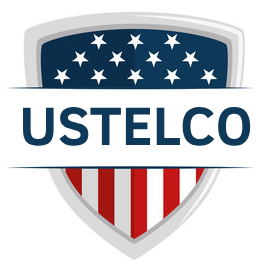Careers & Talent Opportunities
Careers & Talent Opportunities
At United States Telecommunications Corporation (USTelco), we don’t just offer jobs, we offer strategic positions in one of the most critical sectors of national infrastructure.
We’re building the secure, compliant, and sovereign telecom framework that underpins federal agencies, voice carriers, emergency networks, and critical infrastructure. That takes more than skill, it takes conviction.
We’re hiring those who want to build, protect, and lead America’s next-generation voice infrastructure.
A Special Place for Those Who’ve Served
- Retired and transitioning military personnel
- Former federal, state, or local government employees
- Veterans of law enforcement, cyber command, and communications intelligence
- Patriots who understand what it means to protect U.S. infrastructure from within
“We believe those who once defended the nation deserve a home where they can keep doing it, with purpose, precision, and impact.”If you’ve served this country and are ready to apply your leadership, technical discipline, and operational integrity in the private sector, USTelco was built with you in mind.

Why Join USTelco?
Mission-Driven Culture
Every role at USTelco ties directly to national security, communications sovereignty, and public trust. You’re not here to push tickets, you’re here to protect infrastructure.
Real Impact, Real Networks
From STIR/SHAKEN to robocall mitigation, your work shapes U.S. call flow, fraud detection, and compliance — in real time. You’ll see the difference: measured in milliseconds, logged in ledgers, felt by millions.
Elite Talent Environment
Our teams work with top-tier engineers, compliance strategists, and AI technologists from Tier 1 carriers, national labs, and federal agencies. You’ll operate alongside the best, because we only bring on the best.
Growth Without Bureaucracy
We promote on merit, not tenure. Our startup-driven energy combined with infrastructure-grade execution means high performers move fast,and define their own trajectory.
Career Paths
- Network & VoIP Engineering
- Regulatory Affairs & Telecom Compliance
- National CLEC Operations & Routing Optimization
- AI & Behavioral Analytics Development
- Client Success & Enterprise Onboarding
- Fraud Intelligence & Security Operations
- STIR/SHAKEN & Traceback Enforcement
- Federal Accounts & Government Relations
“Whether you’re writing SIP logic or running fraud detection scripts, everything you touch protects the perimeter.”


USTelco Employee Benefits
- Competitive salaries with performance-based accelerators
- Veteran-friendly relocation & onboarding support
- Full medical, dental, and vision plans
- 401(k) with employer match
- Generous PTO, federal holidays, and flexible leave
- Clearance-friendly policies for prior federal service personnel
- Ongoing certifications, leadership training, and conference sponsorship
- Access to exclusive telecom, security, and compliance briefings
Ready to Join the Frontline of Infrastructure?
We’re not hiring to fill seats. We’re building a national force of protectors, engineers, and enforcers.
If you’ve served this country, or want to serve it now in the digital domain, USTelco is where you lead next.
Explore open positions, submit your resume, or connect directly with our Talent Operations team.
Contact
300 New Jersey Avenue NW
Suite 300
Washington, D.C. 20001
Stay Ahead of Voice Compliance & Infrastructure Shifts
Subscribe to get latest update & news

